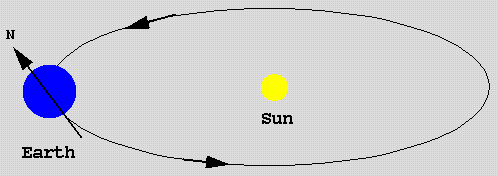
Homework 2
Due: Tuesday 27 January 1997
Name: ________________________
Student Number: ______________

2. (5 Pts) (a) Sketch the approximate relative positions of the Earth, Moon and Sun for a lunar eclipse, as viewed from above the North Pole of the Earth. (The relative sizes need not be to scale.)

(b) What phase is the Moon in? Full
3. (5 Pts) Suppose you are standing on the corner of Hagadorn Road and Grand River Avenue and you see the Moon, fairly high in the sky, to the south (down Hagadorn Road) just after sunset. What is the phase of the Moon? (Hint: All of these phase-of-the-Moon questions are easy once you figure out the relative positions of the Sun, Moon and Earth for each question. So first figure out what direction the Sun is at sunset.)
4. (4 Pts) (a) What constellation is Polaris in? Ursa Minor
(b) What constellation was Polaris in 100 years ago? Ursa Minor, Stars move only very slowly with respect to each other.
5. (3 Pts) Why is the heliocentric (Copernican) model of the Solar System superior to the geocentric (Ptolemaic) model?
(a) It is a simpler model, yet it explains all of the observations.
(b) It predicted that the inner planets would appear to have phases when
viewed from the Earth, which was later found to be true.
(c) It predicted that the Earth itself was moving, which was later found to
be true.
(d) The heliocentric model doesn't require the Earth to be at a unique
position in the Universe.
(E) All of the above.
6. On the attached sky map for December, identify as many of the stars from the attached list of 16 brightest Northern Hemisphere stars as you can find by drawing a small circle around each and writing its name next to it. (1 point for each correct star, but minus 1/2 point for each incorrectly labeled star.) This is the same type of question, but for different months, which will be asked on all of your midterms and the final.